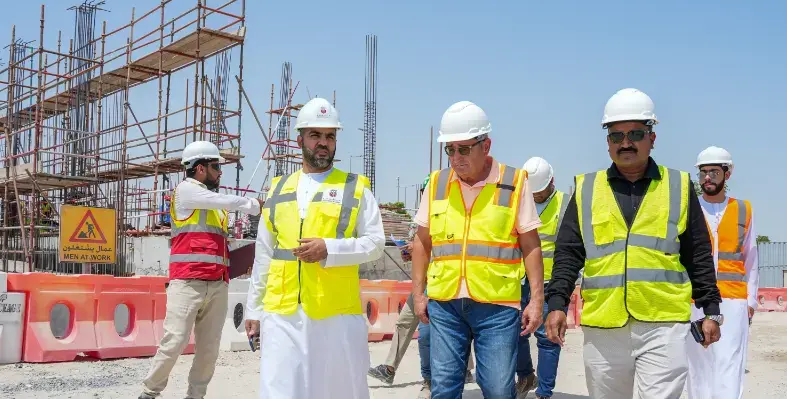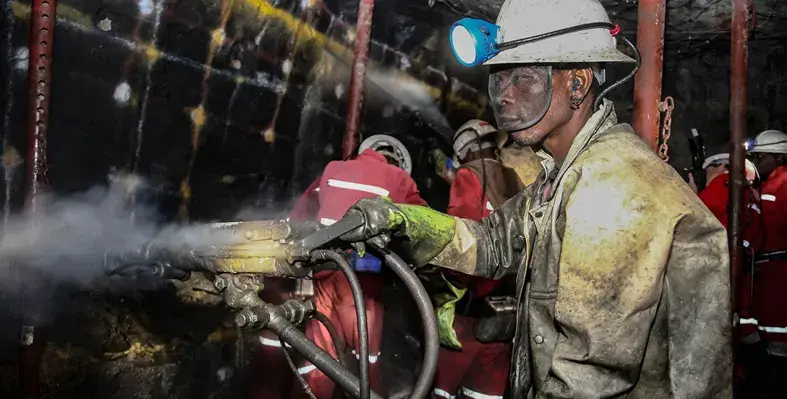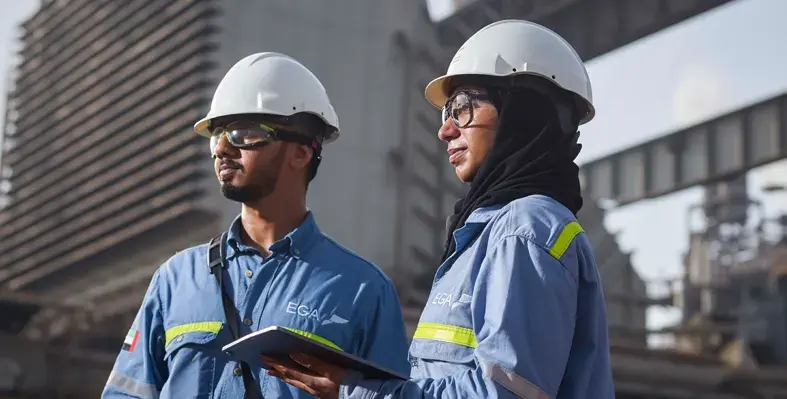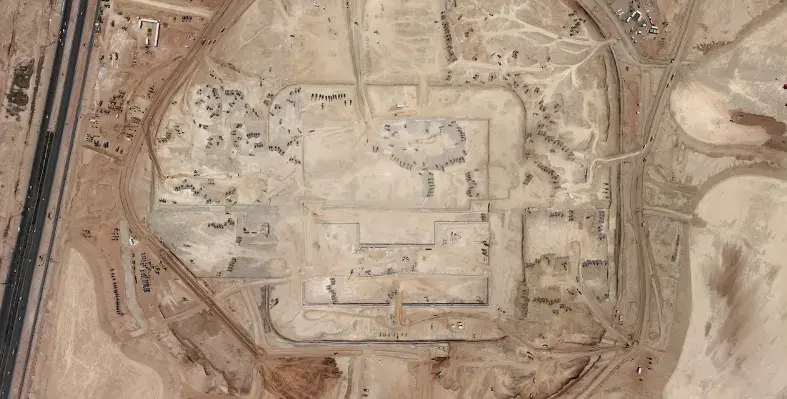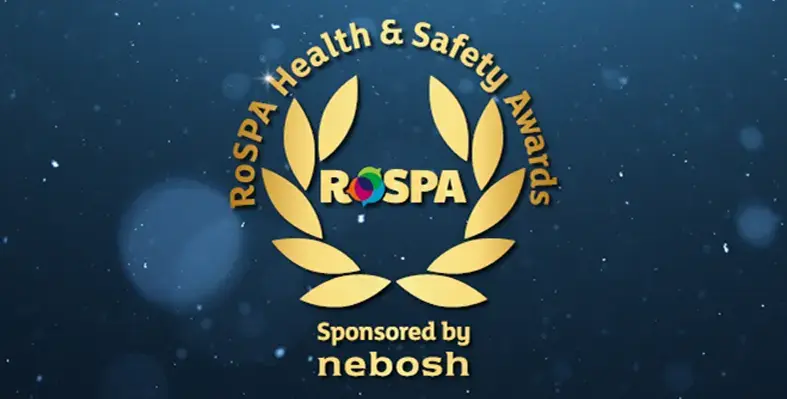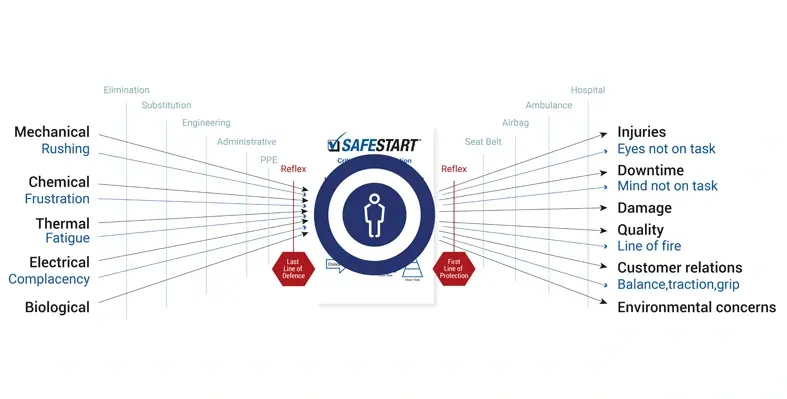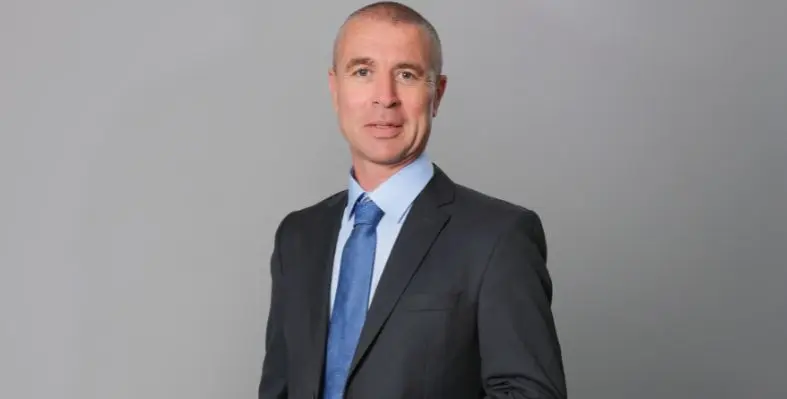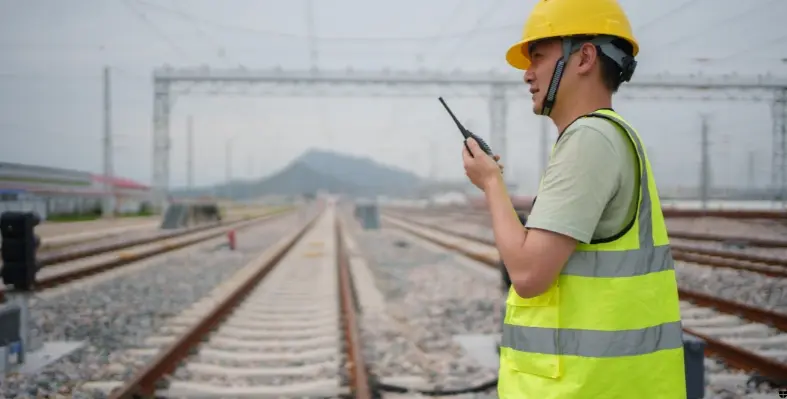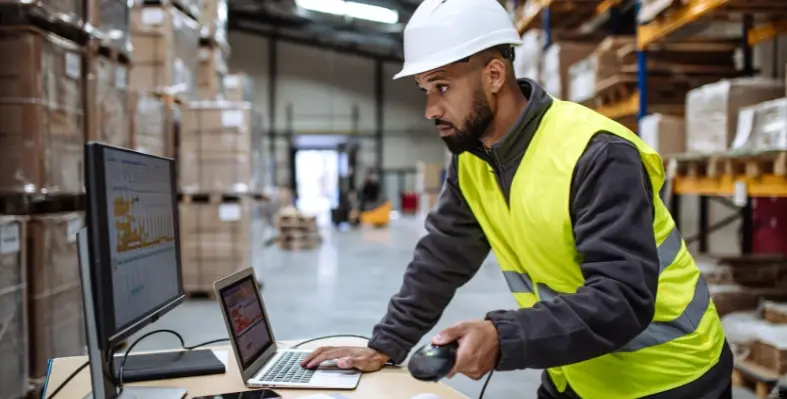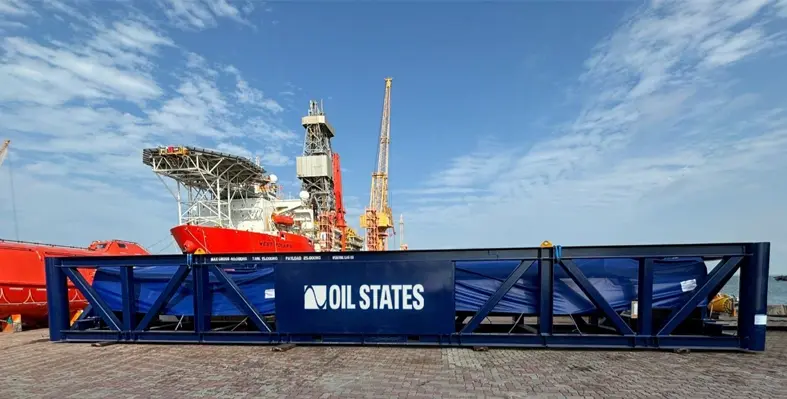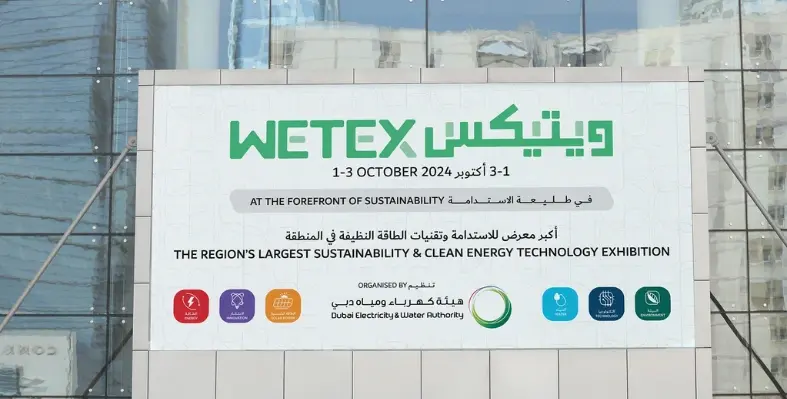HSE
HSE
- Details
- Robert Daniels
- HSE
- Topic: HSE
- Date: 7 November, 2024
- Year: 2024
Larry Wilson, author and CEO, SafeStart, looks at how neuroscience aligns with critical error reduction techniques
As we continue our series on Paradigm Shifts in safety (if you haven’t yet, catch up at https://ae.safestart.com/paradigm-shifts/), we encourage you to dive into the seventh article of the twelve-part series.
In the last issue, we discussed the concept of self-triggering; the importance of learning how to self-trigger quickly, or at least quickly enough to prevent making a critical error, which means that we must train the sub-conscious mind. Now, to a certain extent, we have already discussed the importance of involving or using the sub-conscious mind to prevent injuries when we talked about developing good habits with eyes on task, so that if or when your mind goes off task, you’ll still, most likely, get the benefit of your reflexes.
Habits and reflexes are not things we are deciding to do in the moment with our conscious mind. They are both sub-conscious. All this is where the neuroscience comes in. Until recently (last 10 years or so) scientists and psychologists could speculate as to what part of the brain was being used. But it wasn’t until FMRI’s that they could prove it. And I think that it’s interesting how the neuroscience and the Critical Error Reduction Techniques (CERTs) are aligned or how the neuroscience supports or validates the CERTs. But my dad, who is an engineer, was unimpressed. When I explained it to him, he said that it was one of the best examples of, “Locking the door after the horse has got out” he’d ever heard.
So, he’s got a point. But it’s still pretty interesting. And it is science which always helps when dealing with sceptics. So, we’re going to get into at least a bit of it as we go through all four CERTs. Two of which we have discussed already: work on habits, or work on improving your safety-related habits and self-triggering on the states (rushing, frustration, fatigue) so you don’t make a critical error. And obviously, this has to happen quickly.
Even if it’s only a split-second too late, it’s still too late. And to get close to reflex speed, we need to use the sub-conscious mind. The conscious mind just isn’t quick enough. Ironically, training the sub-conscious mind—isn’t quick—and when you think about learning arithmetic, it wasn’t always exciting either. To give you an example of speed, repetition, and the power of the sub-conscious mind, just answer the following question as quickly as you can: What is 3 x 4? You probably already have the answer in your head before you read it here. It’s 12. That’s how quick your sub-conscious mind is. But how many repetitions did it take to get that quick—so you didn’t have to process anything? And very reliable: almost impossible to get it wrong… now try quickly 13 x 14.
To find out the answer to the last question (without checking your calculator) and explore how the neuroscience behind Critical Error Reduction Techniques aligns with safety practices, continue reading the full article clicking here. Stay with us as we delve deeper into the power of the subconscious mind and its role in preventing critical errors.
Scan the QR Code below to read the article in its entirety:
- Details
- Sania Aziz
- HSE
- Topic: HSE
- Date: 28 October, 2024
- Year: 2024
The Abu Dhabi Department of Energy (DoE) has successfully completed its Safety in Heat campaign, aimed at ensuring compliance with the summer midday work ban for all companies operating in the energy sector.
This regulation, which prohibits outdoor work under direct sunlight from 12:30 pm to 3:00 pm, was in effect from 15 June to 15 September 2024, enhancing worker safety during the hottest months.
Throughout the campaign, the DoE’s Health, Safety, and Environment (HSE) Department conducted numerous inspection visits to sites in Abu Dhabi and Al Ain.
These inspections focused on educating workers, employers, and supervisors on the importance of adhering to the work ban and implementing best practices to minimise heat stress risks. As part of these efforts, companies were encouraged to provide shaded rest areas, fans, ample water, hydration salts, and essential first-aid equipment.
Engineer Abdul Rahman Al Alawi, Director of the HSE Department, underscored the importance of the campaign, noting that it not only reinforced adherence to safety standards but also highlighted essential measures to protect workers from heat-related illnesses. Al Alawi praised the cooperation from various entities and thanked teams involved in promoting worker safety, recognising the campaign’s role in fostering a safe work environment.
The DoE’s campaign included 2,139 internal workshops and 5,056 awareness sessions, reaching approximately 37,759 workers across the sector. Over 7,276 informational brochures were distributed, while social media platforms, videos, text messages, and emails helped deliver more than 3,800 safety messages, benefiting a total of 40,828 workers. Furthermore, 3,943 inspection visits were carried out, verifying compliance with established safety standards.
- Details
- Louise Waters
- HSE
- Topic: HSE
- Date: 25 October, 2024
- Year: 2024
Nearly one in five (18%) workers have experienced harm at work globally, with nearly half of this going unreported, according to the latest edition of the Lloyd’s Register Foundation World Risk Poll
The research comes from global safety charity Lloyd’s Register Foundation’s latest report: Engineering safer workplaces: Global trends in occupational safety and health using World Risk Poll data collected by global analytics firm Gallup, who conducted 147,000 interviews in 142 countries and territories around the world.
According to the report, rates of harm vary greatly from sector to sector, with fishing named as the most dangerous occupation, just ahead of construction and mining. Low- and lower-middle-income countries were also found to have higher workplace harm rates (19% and 22%, respectively). Almost two thirds of the global workforce (62%) have never received occupational safety and health (OSH) training about risks associated with their work.
Those in less stable forms of employment, such as part-time employees, were found to be more likely to suffer from harm than full-time employees (20% versus 15%). This is compounded by the fact that rates of training were found to be lower for part-time employees – less than a quarter (23%) had received workplace safety training in the past two years, compared to 41% of full-time employees.
Only half (51%) of the workers globally who experienced harm at work say they reported it. The report found that the more recently people have had training, the more likely they are to report workplace harm if they experience it. Individuals who had received workplace safety training in the last two years are 3.3 times more likely to report harm, compared to those who had never received any.
Nancy Hey, director of evidence and insight at Lloyd’s Register Foundation, said, “Low reporting rates, combined with a potential lack of awareness due to low training rates, mean that the true extent of workplace harm is rarely revealed. That’s why safety and health interventions that are both regular and tailored must be a priority for both businesses and policymakers, along with clear reporting tools for all employees – including both part-time and full-time. Special efforts must be made to reach those most at risk and ensure they have a holistic understanding of what safety and health means, as well as an in-depth knowledge of essential procedures in place to keep them safe."
According to International Labour Organization (ILO) estimates, nearly three million people worldwide die of work-related accidents and diseases every year. Another 395 million workers sustain non-fatal injuries, particularly in hazardous industrial sectors such as agriculture and construction.
The report can be downloaded here
- Details
- Sania Aziz
- HSE
- Topic: HSE
- Date: 22 October, 2024
- Year: 2024
Emirates Global Aluminium (EGA), the UAE's largest industrial company outside the oil and gas sector, has announced achieving zero heat-related illnesses for the third consecutive summer.
Heat-related illnesses pose a significant risk for anyone working outdoors during the UAE's intense summer heat, with the potential to be life-threatening if not addressed promptly. EGA’s industrial operations, which generate additional heat, run continuously throughout the summer, requiring round-the-clock outdoor work.
EGA's 'Beat the Heat' programme, in place for over a decade, is a comprehensive, summer-long initiative designed to combat occupational heat stress. It focuses on raising awareness among employees about the early signs of heat-related illness and empowering them to take proactive measures to prevent its onset.
Stress prevention
EGA’s ‘Beat the Heat’ campaign incorporates several measures to prevent heat-related illnesses, including hydration tests conducted before and during shifts, regular breaks, and cooling showers. The programme also features cooling booths, drinking stations, icemakers, and portable air conditioning units installed throughout the production areas to ensure that both employees and contractors remain cool and comfortable during their work shifts.
Medical personnel from EGA’s on-site centres play an active role in heat stress prevention, working closely with employees and providing immediate treatment to anyone reporting early symptoms of heat stress.
Since 2022, EGA has partnered with US technology firm Kenzen to trial wearable technology that monitors key physiological indicators such as core body temperature and heart rate. This summer, 300 EGA employees used these devices, which provide real-time feedback to both the wearer and EGA’s safety team, allowing for the detection of early heat stress signs before they are physically felt.
The last recorded cases of heat-related illness at EGA were in 2020 when two employees required treatment. Both individuals received intravenous hydration and fully recovered within hours.
Abdulnasser Bin Kalban, CEO of EGA, said, “Our success in completely preventing heat-related illness on our sites for the third year in a row proves that this key hazard for outdoor workers in region can be overcome. Occupational heat stress remains a serious challenge in our region and beyond, and we believe our experience has important lessons for everyone employing people to work outside.”
- Details
- Sania Aziz
- HSE
- Topic: HSE
- Date: 17 October, 2024
- Year: 2024
The New Murabba Development Company, a subsidiary of the Public Investment Fund (PIF), has announced significant progress on the creation of its ambitious urban destination.
Excavation at the iconic Mukaab and its surrounding podium sites is now 86% complete, with over 10 million cubic metres of earth moved. This milestone highlights the fast pace of the project and reaffirms the company’s commitment to delivering the world’s largest, modern downtown.
In addition to the sheer scale of the development, the project prioritises worker safety, having logged over 3 million safe work hours to date.
This focus on safety underscores the company's belief that progress and worker well-being must go hand in hand as it builds Riyadh's new downtown.
Around 900 workers work on-site every day.
Managing a large number of workers
“These milestones are a testament to the dedication and skill of our team, and our ambition to build a world-class destination that prioritises both innovation and the well-being of our workforce. We are proud of the progress made at New Murabba, and excited to continue shaping the future of Riyadh”, said Michael Dyke, CEO of New Murabba Development Company.
The recent progress that New Murabba made highlights the team’s effort during the excavation process.
One crucial element of the development is the focus on environmentally friendly methods for managing the excavated materials.
The excavation process required the daily use of approximately 250 excavators and over 400 pieces of equipment to effectively manage the extensive excavation work. This serves to underline the considerable scale and magnitude of the operation.
New Murabba is set to build a temporary bridge, a key infrastructure element that will link the construction site by crossing King Khalid Road.
This bridge will play a vital role in enabling continuous development and preparing for the start of Mukaab piling in the coming months. By reducing approximately 800,000 truck movements on public roads during earthworks, the bridge will have a positive effect on the surrounding infrastructure. With around 900 workers on-site daily, the project is progressing swiftly, bringing the landmark destination closer to completion.
- Details
- Sania Aziz
- HSE
- Topic: HSE
- Date: 16 October, 2024
- Year: 2024
The Royal Society for the Prevention of Accidents (RoSPA) has officially launched its 2025 health and safety awards, with NEBOSH as the headline sponsor.
The awards celebrate organisations and individuals dedicated to improving health, safety, and wellbeing within communities. RoSPA and NEBOSH, both longstanding leaders in safety improvements, are inviting applications from businesses and organisations seeking recognition for their achievements in health and safety.
RoSPA's health and safety awards programme, established in 1956, is the longest-running of its kind in the UK. NEBOSH, founded in 1979, has been a key partner in driving global health and safety advancements alongside RoSPA. Together, they have contributed to saving countless lives and promoting safety best practices across industries.
Judging process
Applications are open to organisations of all sizes, from small enterprises to large corporations. The awards highlight excellence in safety management systems, while the Inspiration Awards recognise outstanding achievements by individuals and teams. RoSPA has partnered with Chas, the UK's leading health and safety accreditation scheme, to simplify the entry process for Chas members.
Entries will be evaluated through a comprehensive and impartial judging process, conducted by experienced occupational health and safety professionals. The main award panel will be chaired by Dee Arp, Chief Quality Officer at NEBOSH.
Rebecca Hickman, CEO at RoSPA, said, “We are delighted to kick off the RoSPA 2025 Awards and honoured to have NEBOSH by our side as headline sponsor. Together, we have a long history of improving the health, safety and wellbeing of our communities and the Awards is the perfect way for us to stand together and make a difference.
“We look forward to reading about the health and safety innovations of organisations and individuals around the world.”
Andy Shenstone, chief executive, NEBOSH said, “Aligned with our new strategy, we’re committed to advancing NEBOSH’s mission through social purpose initiatives that expand our charitable impact in the UK and globally. Collaborating with like-minded organisations is crucial to our success, and as a fellow charity, we’re honoured to support RoSPA’s vital work in preventing harm.”
To enter the 2025 RoSPA Awards, find out more information on the process or to see the extra benefits for RoSPA members see www.rospa.com/awards.
- Details
- Sania Aziz
- HSE
- Topic: HSE
- Date: 4 October, 2024
- Year: 2024
When discussing risk management and workplace safety, Personal Protective Equipment (PPE) is often regarded as the last line of defence. This traditional approach, doesn’t account for the most basic protective measures, especially those involving mechanical or kinetic energy.
The role of reflex actions in preventing incidents is a critical factor which is often overlooked. Understanding and leveraging the benefits of reflexes offers a powerful opportunity to prevent serious injuries and fatalities in the workplace.
The traditional model of safety management follows the hierarchy of controls, which places PPE as the last line of defence, a final measure after other controls have failed. However, in certain cases, PPE functions as an escalation control, protecting workers after an incident has already begun. Seat belts, fall arrest harness and similar gear do not prevent accidents but aim to reduce the severity of injuries once an error has occurred. While PPE plays an important role, reflex actions serve as the true last line of defence and the first line of protection in many scenarios.
The Bowtie Model helps illustrate this by mapping sources of hazardous energy—whether mechanical, chemical, thermal, electrical, or biological—and categorising controls into prevention and mitigation. In most cases (over 90%), mechanical or kinetic energy is the source of serious workplace injuries and fatalities, and as a result reflexes or whether the person will get the benefit of their reflexes becomes a critical factor in terms of the potential severity of the outcome. Outside the controlled work environment, where situations are more unpredictable, reflex actions often determine the difference between a close call or near-miss and a fatality. For instance, a reflexive movement could help a pedestrian avoid being hit by an oncoming vehicle.
Traditional safety practices tend to focus on high-risk activities through rules, procedures, and PPE. However, the majority of serious incidents occur during medium or low-risk tasks. Data from over 400 fatal workplace incident reports shows that 47-71% of these fatalities could have been avoided or lessened had the workers benefited from reflexive responses.
The data also reveals that in over 95% of incidents, the unexpected event that caused the injury stems from the individual themselves. Whether it’s due to rushing, fatigue, frustration, or complacency, human factors play a critical role in workplace safety. Reflexes are key to mitigating incidents in these medium to lower-risk scenarios, where more traditional controls may not be as effective.
The role of reflexes in preventing serious injuries
Reflexes are innate to humans and tested at birth to ensure they function properly. However, whether someone gets the benefit of their reflexes is influenced by human factors such as rushing, frustration, fatigue and complacency, which can cause eyes not on task and mind not on task. If a person’s mind is not on task due to complacency, their reflexes can still help prevent accidents, even if the reflex is a bit slower. But if their eyes are also off task, then they might not get a reflex at all, which can significantly increase the risk of a serious injury or fatality.
External factors like technology can exacerbate the issue. Mobile phones and fast-paced environments condition our brains to experience shorter bursts of focus, leaving us vulnerable to distractions.
This highlights the importance of critical error reduction techniques, such as self-triggering on states like rushing, frustration and fatigue, as individuals can feel and identify these states in the moment and then quickly think about keeping their eyes and mind on task. Complacency, on the other hand, is more passive and harder to detect.
One way to counteract complacency is to build strong safety-related habits, such as maintaining visual awareness before moving hands, feet, body or machinery. These habits ensure that employees will still get the benefit of their reflexes even if their minds are not on task, because they will still be looking at what they are doing.
At an organisational level, addressing human factors is crucial for reducing incident rates. Employers can help by ensuring workers have adequate rest, hydration, and a work environment that minimises unnecessary stress. When examining the Bowtie Model, it becomes clear that human factors like rushing, frustration, fatigue, and complacency need to be considered along with the various forms of hazardous energy as these factors lead to critical errors such as "eyes not on task" and "mind not on task," which can severely impact reflexive responses. By understanding and implementing critical error reduction techniques, organisations and individuals can add an extra layer of protection, leveraging reflexes as both a preventative and mitigation tool in workplace safety.
In conclusion, the role of human factors and reflexes and their significance as the real last line of defence and first line of protection has been largely overlooked in workplace safety. Organisations that focus on enhancing cognitive effectiveness and reflexive responses have a much better chance of preventing serious incidents or reducing their consequences.
To explore the full insights from Larry Wilson and Dr Waddah S Al Hashmi on workplace safety and reflexes, read the complete article at https://ae.safestart.com/article/the-hierarchy-of-controls-and-the-bowtie-model/
- Details
- Sania Aziz
- HSE
- Topic: HSE
- Date: 30 September, 2024
- Year: 2024
Paul Burns, who heads corporate HSSE training at ACWA Power, pens a piece for Health, Safety and Environment Review Middle East. Read on:
There is a dual impact of HSE on people and businesses. At last year’s MENA HSE Forum, I emphasised the critical importance of Health, Safety, and Environment (HSE) practices in benefiting both individuals and businesses. Embedding comprehensive HSE strategies into an organisation's fabric is essential for transforming approaches to health and safety and enhancing business performance.
Robust HSE policies create a secure work environment for individuals, minimising risks and boosting well-being, job satisfaction, and productivity. Organisations also benefit from fewer disruptions, lower incident-related costs, reduced absenteeism, and enhanced reputation.
It is important to enhance organisational culture and compliance through safety knowledge. At ACWA Power, 2023 marked a significant shift in HSE strategy, transitioning from traditional injury metrics to an accountability-driven approach. This realignment, focusing on people-based safety and proactive management, has been fundamental in embedding an advanced culture of safety and responsibility.
Safety training also empowers our workforce to identify potential hazards and take proactive measures – supporting regulatory alignment and promoting adherence to safety standards. At ACWA Power, a well-informed workforce is a crucial part of our organisational culture, instilling responsibility and collective awareness and making each member feel valued and integral to the process.
The role of the Internet of Things (IoT) and automation in HSE
These values of responsibility and inclusion are now significantly enriched by the Internet of Things (IoT) and automation. These technologies are revolutionising HSE operations by enhancing data collection, analysis, and response capabilities. Digital devices enable real-time monitoring of environmental conditions and employee health, facilitating initiative-taking risk management.
Furthermore, automation technologies streamline safety processes, improve incident reporting accuracy, and minimise human error. ACWA Power's adoption of digital tools, including AI for data analysis, has set a new standard in data-driven safety management. Additionally, Third-Eye AI at key ACWA Power sites has enhanced real-time hazard identification and intervention capabilities and provided greater reassurance and security while showcasing the potential of technology in improving safety.
Despite our progress, the MENA region faces significant HSE challenges, including diverse regulatory frameworks across countries and the need for improved safety awareness and training across industries. Addressing these challenges requires collaboration between government bodies, organisations, industry groups, and thought leaders. As a leader in the field, we are proud to partner with external bodies to share our expertise as thought leaders in HSE.
ACWA Power’s outlook and the future of HSE
Our ability to lead by example was borne out in hard evidence in 2023 – with the company accumulating 72 million man-hours and reducing the lost-time injury rate to 0.01. This is 22% lower than in 2022, with no fatalities. This progress enabled crucial project milestones and implementation of the Reliability of Supply framework, boosting consolidated power availability from 87% to almost 92%.
Looking ahead, HSE will evolve as an operational imperative through the integration of disruptive technologies. Sustainability and resilience will become central to HSE strategies, with organisations adopting holistic approaches that integrate environmental stewardship with traditional safety measures.
The MENA HSE Forum provided a valuable platform for sharing insights, exploring developments in HSE practices, and networking with industry leaders. As a sponsor and speaker, ACWA Power demonstrated its commitment to advancing HSE practices across the region.
The MENA HSE Forum serves as a crucial platform for tackling HSE challenges and unlocking new opportunities. Through ongoing collaboration, investment in technology, and a focus on safety culture, we can drive meaningful progress and ensure a safer, more resilient future for all.
- Details
- Sania Aziz
- HSE
- Topic: HSE
- Date: 26 September, 2024
- Year: 2024
At InnoTrans, HIMA Group will present its digital safety solutions for the railway sector, including the Independent Open HIMA Safety Platform.
These solutions are designed to meet the needs of light, urban, and high-speed rail networks, focusing on safety, flexibility, and cost reduction.
HIMA will showcase its RaSTA implementation, which has been integrated into the Open Safety Platform, offering a cost-effective approach for SIL 4 railway automation solutions. The company will also feature solutions beyond safety, such as rail electrification and secure ecosystems.
Chris Elliott, global head of rail at HIMA, stated, “At InnoTrans, we are presenting holistic solutions based on our Independent Open Safety Platform, which avoids being tied to proprietary systems.”
HIMA’s solutions for traction power control, demonstrated through TrackLink SCADA, will also be on display. The company will highlight its mobile safety systems, including the TrackLink Overspeed Prevention System for tramways, and discuss cybersecurity challenges in collaboration with genua to ensure secure ecosystems for railway operations.
A new safe HMI (SIL 3) will be introduced, providing an advanced, touch-enabled solution for displaying critical safety information.
“At this year’s InnoTrans, we are presenting various new products and solutions with added value for our customers by enabling maximum flexibility, integration and cost efficiency,” said Jörg de la Motte, CEO of HIMA Group.
- Details
- Sania Aziz
- HSE
- Topic: HSE
- Date: 25 September, 2024
- Year: 2024
Each year, nearly three million people lose their lives due to work-related accidents or illnesses, with industrial and manufacturing plants posing significant risks from chemicals, explosives, and heavy machinery.
To address these hazards and enhance safety protocols, companies are increasingly adopting Environmental Health and Safety (EHS) software as a key tool to reduce workplace incidents.
According to global technology intelligence firm ABI Research, the EHS software market is projected to grow at a CAGR of 6.7% over the next decade, reaching US$2.2bn by 2034.
“Safety is an integral part of companies' Environmental, Social, and Governance (ESG) reporting, and it’s become a board-level priority. Businesses must demonstrate improvements in safety metrics, which can foster a stronger safety culture throughout the organisation. However, many industrial and manufacturing sites still rely on outdated paper-based data collection. EHS software allows companies to collect data, analyse it to establish a baseline, and track progress with visualisation tools,” said Michael Larner, analyst at ABI Research.
Employees urged to be part of the conversation
The chemical industry was among the first sectors to recognise the importance of refining safety processes, given the severe consequences of mistakes. However, other sectors such as oil & gas (CAGR 7.0%) and mining (CAGR 7.1%) are beginning to invest heavily in EHS solutions.
“EHS software is no longer limited to safety professionals. With innovations like capturing images via mobile devices, annotating them, and logging potential risks, more employees are encouraged and empowered to take an active role in improving safety within their facilities,” Larner said.
Companies such as Alcumus, ComplianceQuest, Cority, Dakota Software, Enablon, Ideagen, Intelex, IsoMetrix, SafetyCulture, Secova, TenForce, and VelocityEHS are helping businesses digitise their safety protocols and improve overall safety practices.
These insights are part of ABI Research’s analysis report Ensuring Worker Safety with EHS Software. This report is included in the company's Industrial & Manufacturing Markets research service, which provides analysis, data, and expert insights into key market trends.
- Details
- Louise Waters
- HSE
- Topic: HSE
- Date: 24 September, 2024
- Year: 2024
Seadrill, a global leader in oil and gas offshore drilling, is to equip its high-spec fleet of floating drilling vessels with Oil States' managed pressure drilling (MPD) technologies, in a new collaboration aimed at enhancing safety and efficiency while simplifying and standardising MPD systems in offshore operations
Oil States’ field-proven MPD Integrated Riser Joint (IRJ) improves the safe handling of gas influx while significantly reducing nonproductive (NPT) time typically encountered with deepwater MPD operations, and is specifically designed to enhance MPD operational efficiency. This riser joint is more compact, allowing for safer and easier handling with greater functionality, which enables the rig to remain over the well while testing the retrievable seals within the joint. All features of the IRJ can be function and pressure tested while on deck. The IRJ is equipped with twin retrievable annular seals, a passive rotating control device (RCD) bearing assembly and hard-faced bore that eliminates the need for a wear sleeve. Together, these advances reduce NPT and unnecessary trips while promoting longer bearing and seal life. This contributes to seamless and streamlined MPD operations, supporting Seadrill’s MPD standardisation efforts while delivering safer, more efficient operations to their customers.
Cindy Taylor, Oil States president and CEO commented, “We look forward to a long-term relationship with Seadrill as we supply them with multiple MPD IRJs for their fleet of high-performance vessels. While supporting Seadrill’s adoption and integration of our MPD system, we endeavour to optimise our equipment to allow for oil and gas reserves to be unlocked safely and efficiently to meet growing global energy demands.”
Samir Ali, executive vice president, chief commercial officer, Seadrill commented, “This technology places Seadrill at the forefront of safe, cost-effective deepwater MPD services, offering our customers an unrivalled simplicity of MPD drilling while providing the highest levels of drilling efficiency and safety.”


